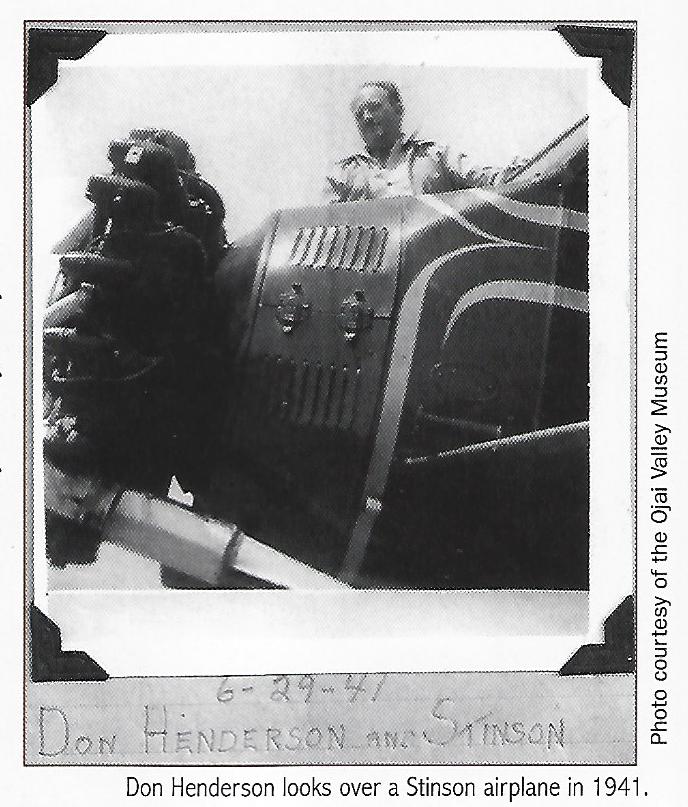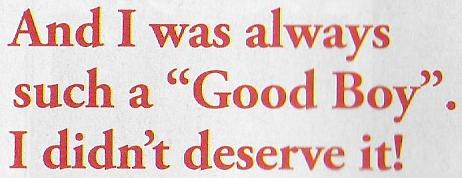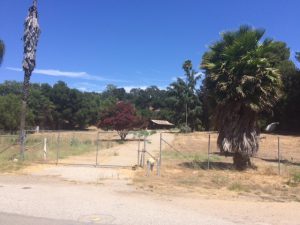The following article first appeared in the Fall 2015 issue of “The Ojai Valley Visitors Guide” which was published by the “Ojai Valley News.” It is reprinted here with their permission.
THE PLANE TRUTH ABOUT OJAI’S AVIATION HISTORY
Story by
Perry Van Houten
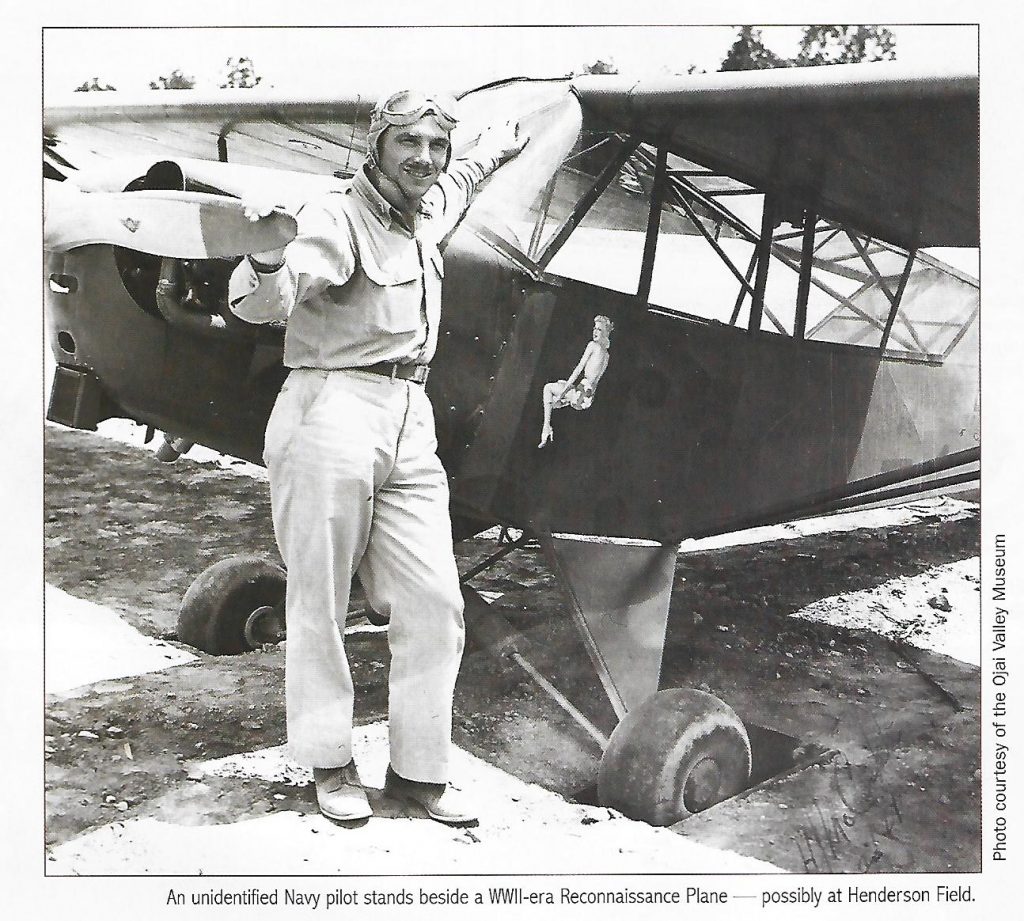
Along the airfield’s perimeter was a low barbed-wire fence, and a grove of English walnut trees grew on the south and west sides. A few locals remember a restaurant across Highway 33 from the airstrip, The Airport Cafe, in the present location of Ojai Termite & Pest Control. A bar directly across Baldwin Road from the airstrip was known as The Refuge.
“AIRPLANE RIDES $8.00”
The sign was posted on the window of the two-seat Aeronca Champion parked at Henderson Field in Mira Monte. Twelve-year-old Drew Mashburn lived nearby on South Rice Road and might have been on his skateboard in 1964 when he noticed it. He had never flown in an airplane, and he knew this was his chance.
A few days later, Drew and his best buddy, Mark Madsen, 11, spotted the plane’s pilot standing there. They scraped together eight bucks between them, hoping the pilot would let them both cram into the passenger compartment of the plane. But the pilot insisted the price was $8 apiece.
The boys returned the next day, and the day after that, and begged. “I can remember the pilot actually threw his arms up above his head and he says, ‘Alright, I’ll go ahead and I’ll take the $8, and I mean not a penny less,’ ” Mashburn says. Wild blue yonder, here we come, he thought. His whole family gathered at Henderson Field for the occasion.
Henderson Field
Don Henderson built Henderson Field in the 1940’s, on family property near the intersection of Highway 33 and Baldwin Road. He ran a small flying school there, commissioned by the Army Air Corps during World War II. For nearly 30 years, the 2,100-foot runway accommodated up to 20 aircraft per week.
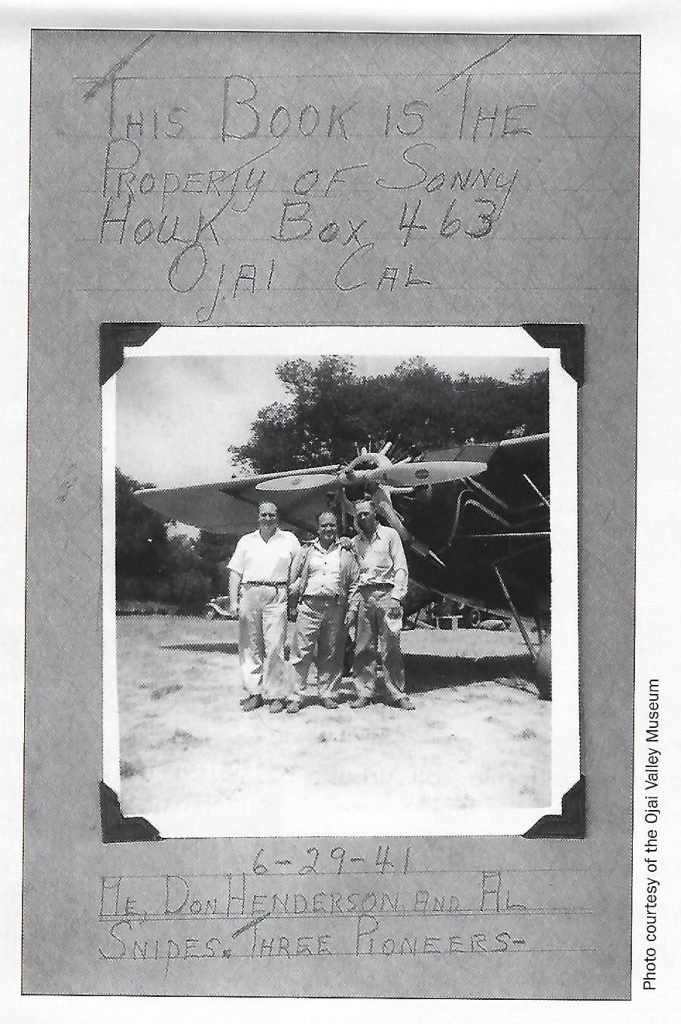
Back in the ’50s and ’60s, a popular pastime was flying from local airport to local airport; for instance, from Santa Paula Airport to the Ventura Airpark at Pierpont Beach to Henderson Field in Mira Monte. Well-to-do folks from Los Angeles would fly into Henderson on weekends, including Hollywood stars like Robert Young, Claudette Colbert and Norma Shearer.
“It was the only real, genuine airport I knew of in the Ojai Valley,” says Santa Paula pilot Bruce Dickenson, who had just learned to fly and landed his Piper PA-12 at Henderson Field a few times in the late 1960s. “It was a non-event,” Dickenson recalls, although he remembers there was a big set of power lines pilots had to avoid.

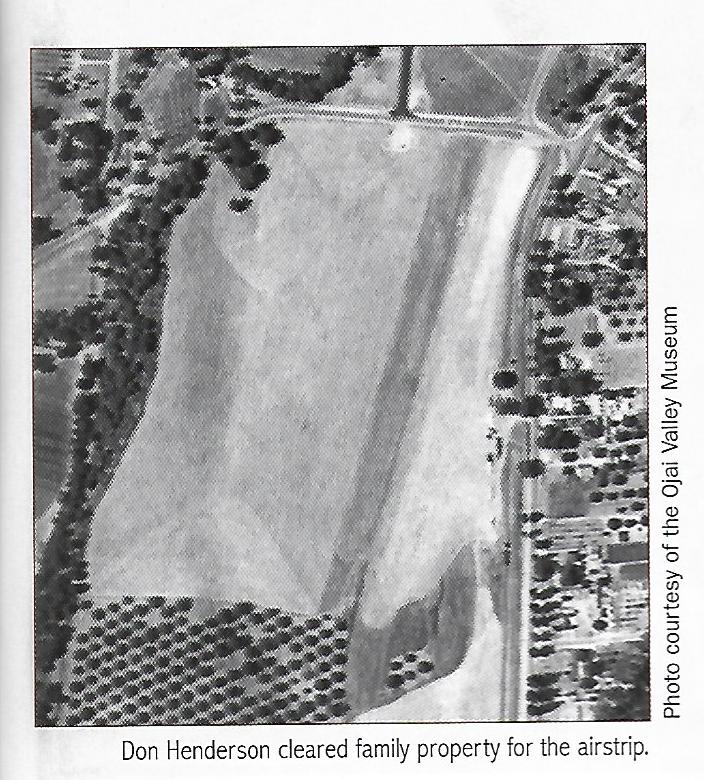
In July 1945, Don Hendeson died in the crash of his small plane near the airfield. He was 37. His son, Don Henderson Jr., was 3-and-a-half when it happened. He says his father had taken off in the fog early one morning for Bakersfield when, for some reason, he decided to return to the airstrip. “He overshot the runway and ended up in the walnut grove, on fire,” says Henderson, now 74. “I often think about how my life would have been different if he hadn’t died that day.”
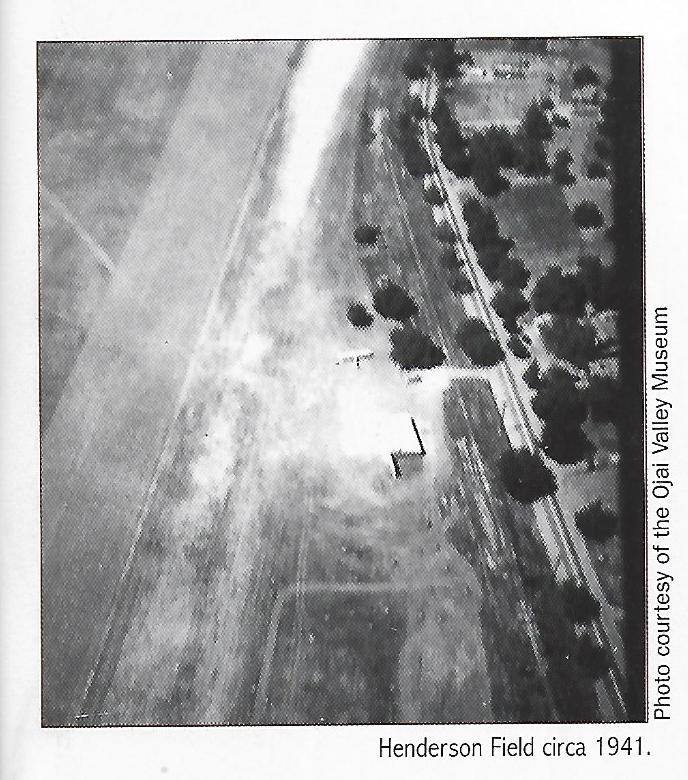
Henderson Field, which had gone public just six months before the crash, stayed in operation and even opened hangars and a waiting area — with restrooms — in 1949. Pilots landing at night remember being guided down by their wives, who would park at the end of the runway and shine the car lights. The airstrip closed around 1970 and was replaced by the Ojai Villa Mobile Estate, which is still in existence today.
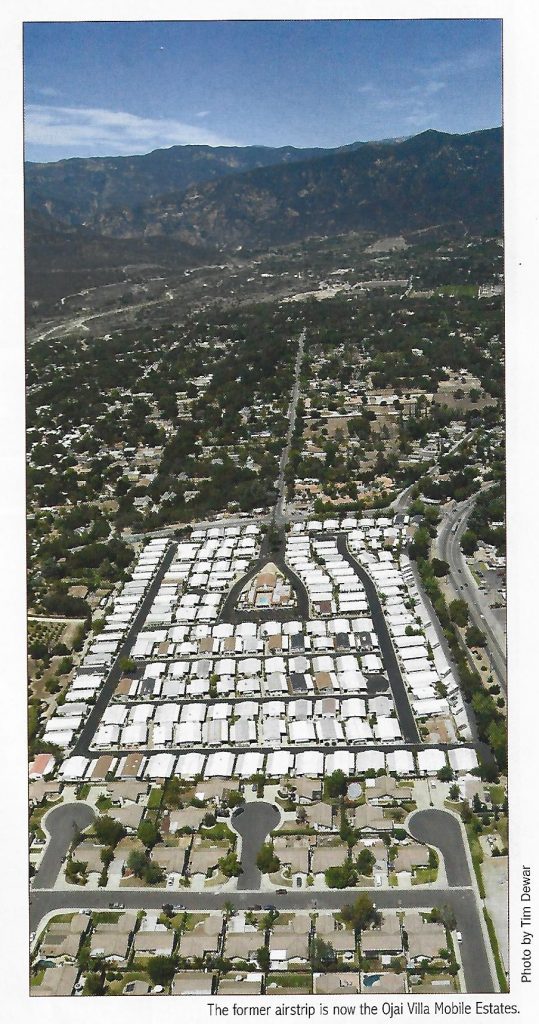
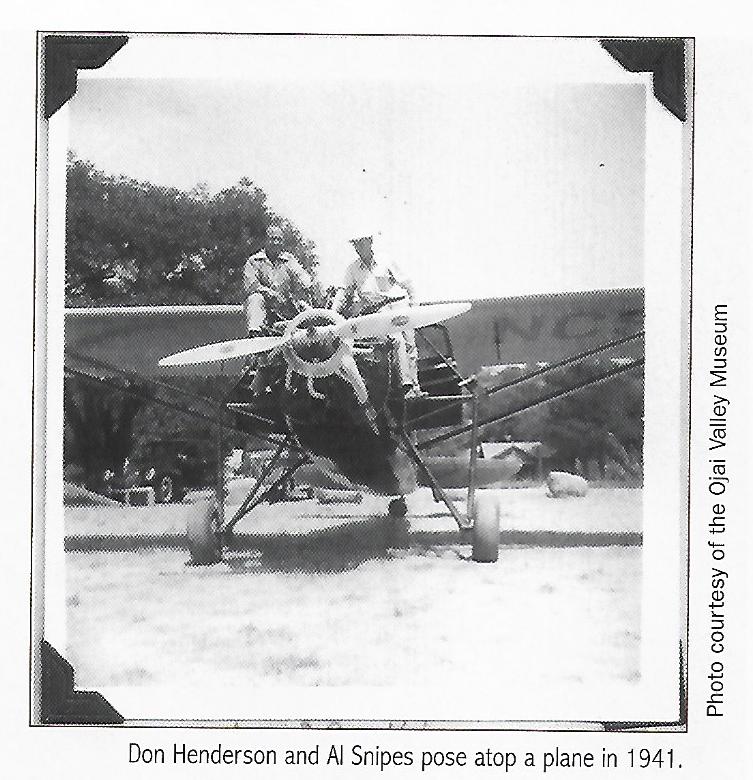
Hardly anything remains of the old airfield, except a portion of the runway sticking through the dirt on the north side along Baldwin Road, and some cream-colored rocks. “Almost directly across the highway from AJ’s Express Chinese Food you will see several boulders. The boulders used to line the entrance to Henerson Field and the hangars,” say Drew Mashburn.
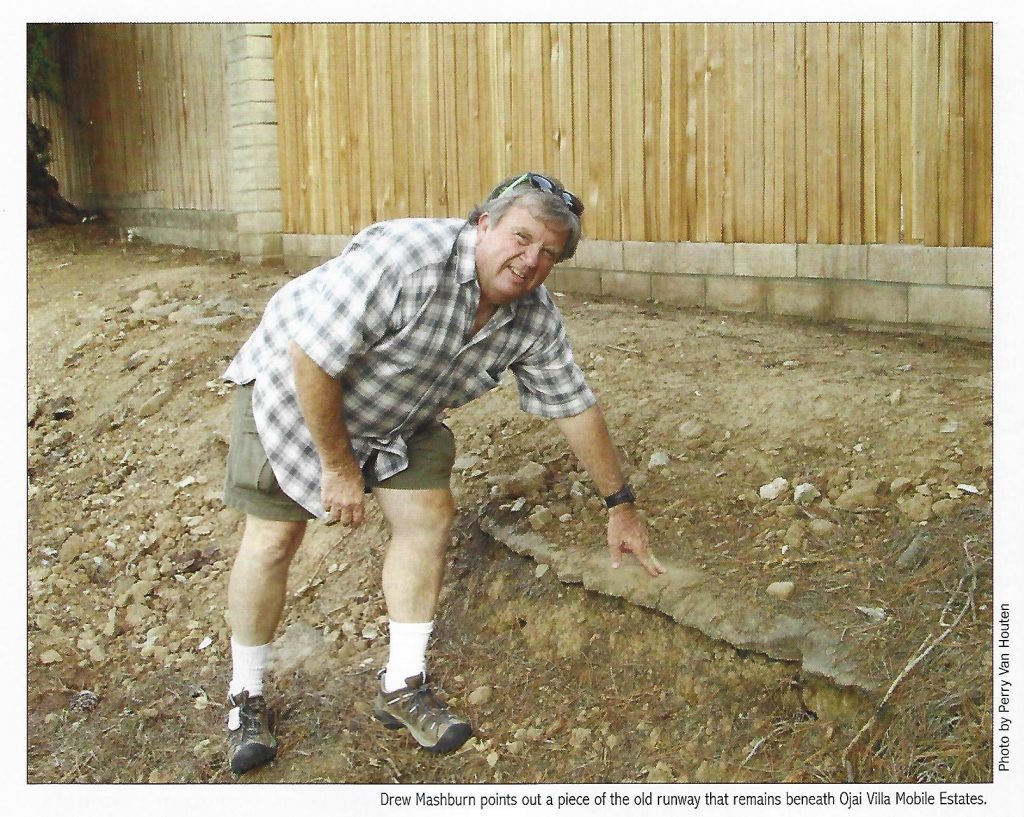
Other Ojai Airstrips
The Ojai Valley’s fondness for flying machines dates back to the earliest days of aviation. A 1929 aerial photograph shows a 1,500-foot airstrip near the “Y” intersection, where Vons is today. “It was removed around the time the Krotona Institute was built because the planes were taking off and landing right over people’s heads,” says Ojai historian David Mason. The Theosophical Society had purchased land south of the runway in 1924 in their move from Hollywood to Ojai.
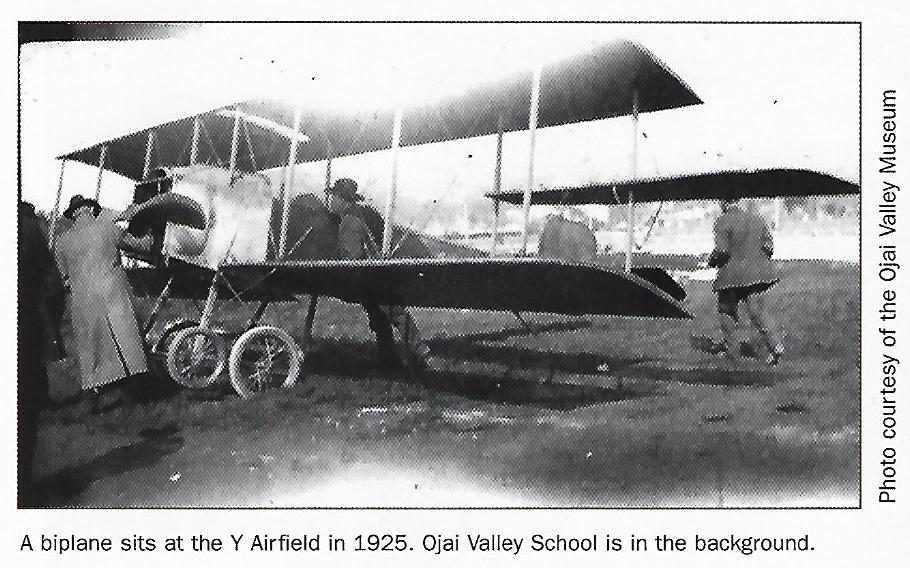
Mason says a private airstrip on Rancho Cola near Lake Casitas may have been used in the filming of the 1950s TV series, “Sky King.” It was also used as a base for parachute jumpers. A landing strip in Rose Valley at Bodee’s Rancho Grande is shown on the 1991 USGS Lion Canyon quadrangle topographic map.
The Ojai area is also home to a number of heliports, including one that’s still in use at Help of Ojai’s West Campus on Baldwin Road — often referred to as “the old Honor Farm” by locals — plus several scattered throughout the backcountry that are utilized by fire, law enforcement and search and rescue crews. The late actor Larry Hagman had his private Majlar Heliport built on his estate atop Sulphur Mountain.
Crashes and Mishaps
When Ojai’s greatest benefactor, Edward Drummond Libbey, opened a new golf course and clubhouse in 1924, everyone wanted to check it out, including a Navy lieutenant who flew a military plane from San Diego to Ojai to see it for himself. “He circled the clubhouse a few times and then decided he would land on the fairway. But he nosedived into a sand trap and broke the propeller,” Mason says.
The damage to the aircraft took a couple of days to repair, and soon the pilot was airborne and on his way back to base, when again he had trouble. “He managed to take off from the green, and in doing so he hit the high wire running along Ojai Avenue, and it pulled the plane back down and he crashed again on the street, and broke the landing gear.”
Perhaps the most famous aviation mishap in the Ojai Valley was a product of Hollywood. Frank Capra’s 1937 movie, “Lost Horizon,” is based on the novel by James Hilton, who visited the valley in 1934 and exclaimed, “This is Shangri-La!” The plot follows a British diplomat and some civilians who crash land in the Himalayas. Some of the movie was filmed in the valley — although the Ojai footage reportedly ended up on the cutting room floor. However, the valley is still often referred to as Shangri-La.
In 1945, a USAAF pilot crashed his P-51D Mustang fighter plane into Nordhoff Peak, just below the fire lookout tower, while attempting an emergency landing in bad weather. Since the crash, debris from the wreck has been found scattered all over the mountain. In 1980, a U.S. Forest Service controlled burn in the area accidentally ignited unexploded ordnance from one of the aircraft’s high caliber machine guns, leaving the work crew wanting for flak jackets.
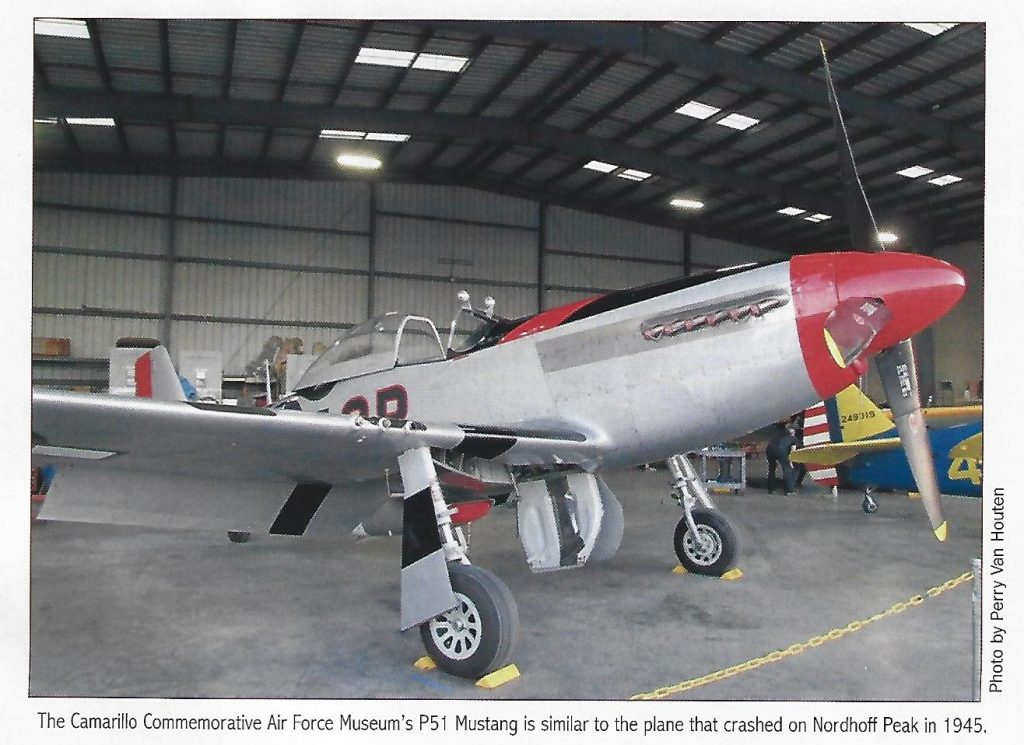
An aviation mishap in the Ojai backcountry in December 1949 had a much happier ending. Twenty-six-year-old Glendale pilot Robert Bryant disappeared on a flight from Glendale to San Francisco. He was found a week later, several miles from the wreckage of his small private plane on Topa Topa Peak, in upper Sespe Canyon. A ground party struggled through waist-deep snow to get to Bryant, who survived but suffered from serious injuries and exposure.
First Flight
Back at Henderson Field, Drew Mashburn’s family looked on as he boarded the plane for his first flight. “We started to get in the airplane and the pilot turned around, looked at us and said, ‘Hey, how much do you guys weigh?” Mashburn knew what the pilot was getting at — there had to be a weight limit. “There goes our ride, I thought,” he recalls.
In despair, the boys gave the man their weights. It was too much, but the pilot gave in. “He said, well, that’s a little over, but we’ll make it work.” They climbed in and off they went down the runway. “It’s good we didn’t spring the door in mid-air and fall out,” Mashburn chuckles.
At first, Mashburn thought the little airplane wasn’t going fast enough to get airborne. “It didn’t seem like we were moving very quick. I thought we were going to move a lot quicker. The wheels of this thing were going down into the chuckholes, and that’s probably the reason we couldn’t pick up any speed,” he says.
Bouncing down the narrow strip of oiled dirt, the aircraft passed the Mira Monte Market (now Rite-Aid). In those days, Mirror Lake was down at the far end of the runway, where Woodland Avenue is now. “And that thing kept getting closer and I kept thinking, man, we’re just gonna land in the lake. And at the very last second, up we went, and it was just stupendous. It was like no feeling I’d ever had in my life.”
